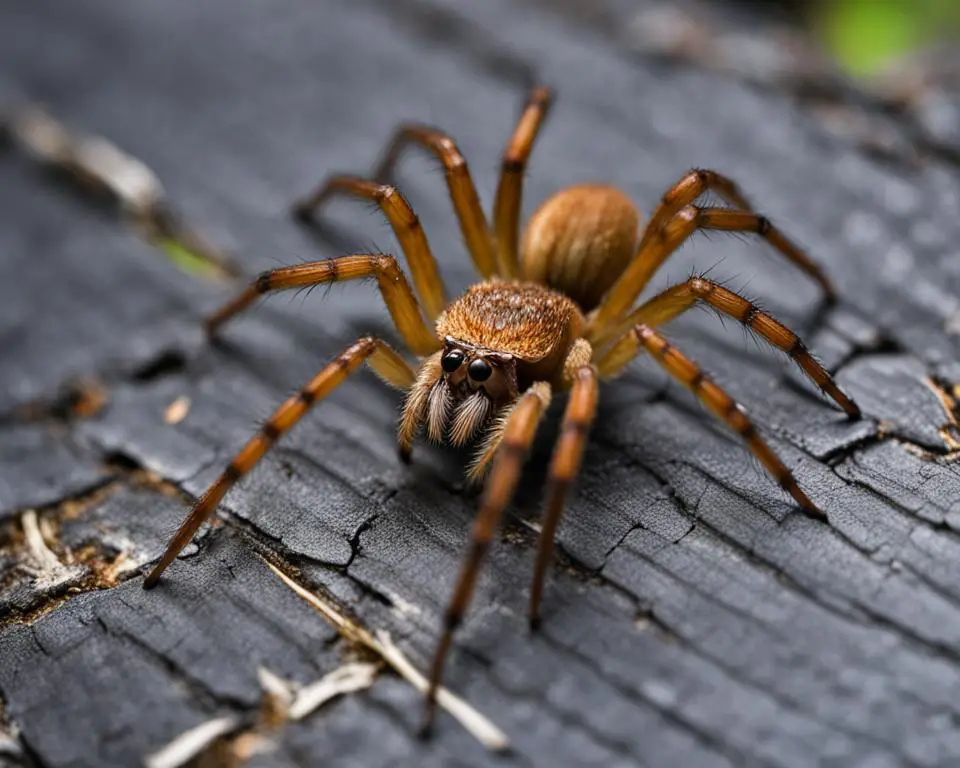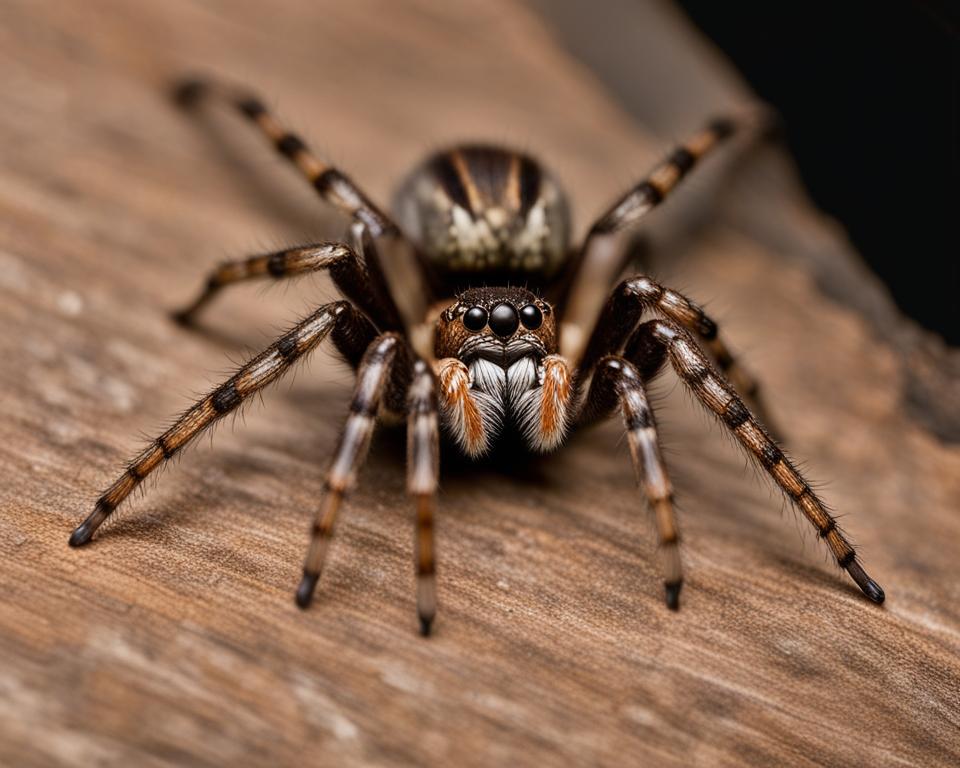If you’re like most people, you probably don’t want to encounter any spiders in your home. Unfortunately, two common species of arachnids, the hobo spider and the brown house spider, might decide to take up residence indoors. Knowing how to identify these spiders is crucial for distinguishing between harmless house spiders and potentially dangerous ones.
In this section, we’ll delve into the key differences between hobo spiders and brown house spiders. By understanding their distinguishing features, you can accurately identify them and take the appropriate measures to manage them.
Key Takeaways:
- The hobo spider and brown house spider are common spiders found in homes.
- Accurately identifying these spiders is essential in distinguishing between harmless house spiders and potentially dangerous ones.
- Understanding the differences in their habitats, behaviors, and physical characteristics will help you manage them appropriately.
- If you’re uncertain about a spider bite or need assistance in spider identification, consult a professional exterminator or medical expert.
Hobo Spider Habitat
The Hobo spider is most commonly found in the Pacific Northwest region of the United States. They tend to thrive in environments with cool and damp climates, such as basements, crawl spaces, and under rocks or logs. Keep an eye out for their funnel-shaped webs in dark and secluded areas of your home.

To better understand their preferred habitats, take a look at the table below:
| Hobo Spider Habitat Preferences | Conditions |
|---|---|
| Climate | Cool and damp |
| Preferred locations | Basements, crawl spaces, under rocks or logs, or any dark, secluded area |
Knowing where hobo spiders tend to build their webs can help you identify if they are present in your home, so it’s best to be aware of the signs of a hobo spider infestation.
Brown House Spider Behavior
The behavior of brown house spiders differs from that of hobo spiders in several ways. Brown house spiders prefer to build their webs in various locations within human dwellings, such as corners, windowsills, and other areas where they can easily catch small insects for food. They are not as reclusive as hobo spiders and can often be seen crawling around in plain sight.
The spiders tend to be solitary creatures, only coming together to mate during the breeding season. The males will often undertake a dangerous journey to find a female to mate with, which is why they are often found wandering around homes.

The brown house spider’s web-building patterns are less organized than those of hobo spiders. Their webs are often messy and irregular, with no discernible funnel shape. Unlike the hobo spider, which constructs its webs in dark and secluded places, the brown house spider builds webs in areas that are easily accessible and visible.
Did you know? Brown house spiders are sometimes referred to as “yellow sac spiders” because of the shape of their silk sacs.
Distinct Characteristics of the Brown House Spider
| Characteristic | Description |
|---|---|
| Size | The brown house spider is typically smaller than the hobo spider, with a body length of around 0.25 inches. |
| Coloration | These spiders range from light brown to dark brown in color, with a slightly lighter shade on their legs. |
| Eye Pattern | Brown house spiders have six eyes arranged in three groups of two, unlike hobo spiders that have eight eyes arranged in two parallel rows of four. |
| Movement | These spiders are fast movers and can run quickly to capture their prey. |
Being aware of these distinguishing features and their behavior will help you identify a brown house spider in your home and distinguish it from other common house spiders.
Spider Bite Symptoms and Treatment
Both hobo spiders and brown house spiders are venomous, but their bites rarely cause severe symptoms. If you are bitten by either spider, you may experience localized pain, redness, and swelling.
It is important to clean the bite area with soap and water and apply a cold compress to reduce swelling. Seek medical attention if symptoms worsen or persist.
In some cases, a doctor may prescribe pain relievers or antihistamines to alleviate discomfort. However, in severe cases, anti-venom may be required.
Tip: If you believe you have been bitten by a spider, try to capture the spider if possible to help with identification.
Remember to take precautions when entering areas where spiders may reside. Wear gloves and protective clothing when exploring basements, crawlspaces, and other spider habitats. By doing so, you can reduce your risk of a spider bite and avoid potential complications.
Identifying Hobo Spiders and Brown House Spiders
If you’ve identified a spider in your home and want to know if it’s a hobo spider or a brown house spider, there are a few characteristics to look for.
Distinguishing Hobo Spiders
Hobo spiders are known for their funnel-shaped webs that are typically built in dark, secluded areas such as basements and crawl spaces. These spiders have light chevron-shaped markings on their abdomens, which can help you identify them.
Distinguishing Brown House Spiders
Brown house spiders, on the other hand, can be found building webs in various locations within human dwellings, such as windowsills and corners. They have a smaller body size and light brown to dark brown coloration with a less organized web structure, making them distinguishable from hobo spiders.
By recognizing these characteristics, you’ll be able to differentiate between these common house spiders and take appropriate action if necessary.
Conclusion
Now that you are familiar with the differences between hobo spiders and brown house spiders, you can accurately identify them and take the necessary precautions. Remember, hobo spiders prefer cool and damp environments and build funnel-shaped webs in dark and secluded places, while brown house spiders tend to build their webs in various locations within your home.
Although both spiders are venomous, their bites rarely cause severe symptoms. If you are bitten, remember to clean the area with soap and water and apply a cold compress to reduce swelling. Seeking medical attention is advisable if symptoms worsen or persist.
By distinguishing the characteristics of hobo spiders and brown house spiders, you can better manage and address concerns about common house spiders. If you need assistance in spider identification or management, it’s always best to consult a professional exterminator or medical expert.
Thank you for reading and learning about the differences between hobo spiders and brown house spiders!
FAQ
What are the key differences between hobo spiders and brown house spiders?
Hobo spiders and brown house spiders have distinguishing features that can help you identify them. Hobo spiders have a distinct funnel-shaped web and light chevron-shaped markings on their abdomen, while brown house spiders have a smaller body size, light brown to dark brown coloration, and a less organized web structure.
Where can I find hobo spiders?
Hobo spiders are typically found in the Pacific Northwest region of the United States, especially in areas with cool and damp climates. They prefer dark and secluded places, such as basements, crawl spaces, and under logs or rocks.
What are the behavioral characteristics of brown house spiders?
Brown house spiders are known to build their webs in various locations within human dwellings. You can find them in corners, windowsills, and other areas where they can easily catch small insects for food.
What are the symptoms and treatment for spider bites?
Both hobo spiders and brown house spiders are venomous, but their bites rarely cause severe symptoms. If you are bitten by either spider, you may experience localized pain, redness, and swelling. Clean the bite area with soap and water and apply a cold compress to reduce swelling. Seek medical attention if symptoms worsen or persist.
How can I distinguish between hobo spiders and brown house spiders?
To accurately identify a hobo spider, look for its distinct funnel-shaped web and light chevron-shaped markings on its abdomen. Brown house spiders, on the other hand, have a smaller body size, light brown to dark brown coloration, and a less organized web structure.
What should I do if I’m uncertain about a spider bite or need help with spider identification?
If you have concerns about a spider bite or need assistance in spider identification, it’s best to consult a professional exterminator or a medical expert for accurate guidance and advice.
